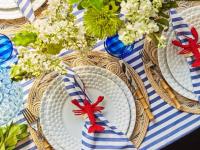Down by the sea
Barbara Dyer: Figureheads
Tue, 11/01/2016 - 8:30am
We are all too young to have seen the carved figureheads on the bow of large vessels, but they existed and are seen now, I believe only in museums. I recently saw two in the Maine Marine Museum in Bath, one a lady and one a gentleman.
It is believed the first of these ships' figurehead were seen during the time of the Vikings. These were golden objects of terror, such as dragons, when then Vikings were attacking the poor northern European people.
In the 16th Century, vessels looked more like tubs, with a round stem with a wide board on front that they attached the to which the planking was fastened. and quite a high stern.
In the 17thand 18th centuries, the figureheads straddled the end of the stem. It was easier to place the figureheads on these and they looked upright. In about 1670, in Europe, there were gilt carving of animals and flowers to decorate the whole vessel. It was almost an overkill, but in the beginning of the 1700s Britain decided to end that practice in order to save money. Also those vessels all decorated did not sail as well because the lines would catch on all the do-dads.
Next they downsized the full figureheads and had just trail boards, leafy and gold leafed.
During the “gold rush era” in the mid-1800s, speed was the important factor. The clipper ship Red Jacket was built in Rockland and broke all records. Figureheads were more horizontal than vertical and were full figures.
In the late 19th Century, one began to see beautiful ladies carved to have a calming effect on the sea by the ladies' charm. They were made to fit on the stem (bow) of the vessel, where it cuts into the sea.
Vessels had a wide beam. The stem was nearly perpendicular to the water's surface. Some, at this time, were carved in a walking position, with the forward leg cut away from the body.
So many vessels were lost at sea. We are fortunate that some figureheads have survived. Many retrieved were just sent for scrap. Today, however, they are prized possessions and even collectible when found. Some fake one have been sold to collectors, as with any antiques.
Most of us have only the privilege of seeing those in museums and the two pictured in this article are at the Maine Maritime Museum in Bath. The man is Capt. Sam Skolfield II from a ship of the same name, built in the Skolfield shipyard in Brunswick in 1884.
When new it was white with touches of gold leaf. It was removed when that vessel was converted to a barge in 1908. It later hung over a door of Sailors Haven in Charlestown, Massachusetts. There it was repainted and his feet rotted off.
The lady figurehead is from a brig, Clarissa Ann, built in Bath, in 1824 by Levi Houthton and named for his daughter. He must have owned the largest number of shares in the vessel.
Event Date
Address
United States
Standard Post



































